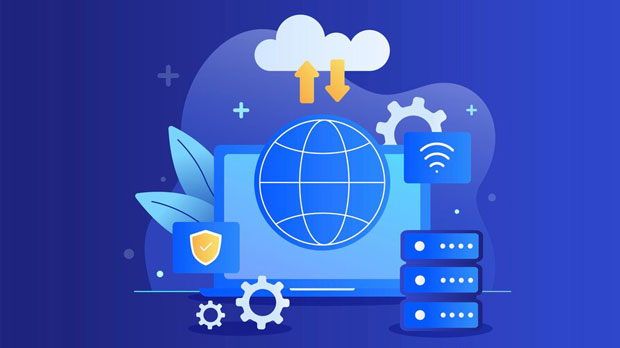When setting up a proxy server on a proxy site, one of the common concerns that users face is whether they need to pay extra for deploying HTTPS proxies. As online privacy, security, and the need for high-speed connections become more significant, HTTPS proxies are increasingly in demand. This article will explore whether there are additional fees for deploying HTTPS proxies on proxy sites and what factors could influence the costs involved. Understanding these aspects will help you make an informed decision about whether HTTPS proxies are the right choice for your needs. Understanding Proxy Sites and HTTPS ProxyBefore diving into the pricing details, it's essential to first understand what a proxy site is and how HTTPS proxies function.Proxy sites act as intermediaries between users and the websites they visit. They route web traffic through their servers, providing anonymity and often bypassing regional restrictions. While traditional proxies route traffic via HTTP, HTTPS proxies encrypt the data transmission, ensuring a higher level of security. This is particularly important for sensitive data or when browsing over unsecured networks.A secure HTTPS proxy ensures that your internet activities are shielded from prying eyes. For businesses or individuals who handle sensitive data, HTTPS proxies are necessary for protecting online communication. However, HTTPS proxies come with higher demands in terms of resources, bandwidth, and security, which can affect pricing.Factors That Determine the Cost of HTTPS Proxy DeploymentWhile some proxy sites may offer basic proxy services at no extra charge, the deployment of HTTPS proxies often comes with additional costs. Let’s break down the factors that influence these costs:1. Security Features and EncryptionThe primary distinction between HTTP and HTTPS proxies is encryption. HTTPS proxies use SSL/TLS protocols to secure the data exchange, which requires additional server resources and processing power. The encryption process involves certificates and cryptographic algorithms that safeguard data integrity and confidentiality. As a result, HTTPS proxies are more resource-intensive and expensive to maintain than HTTP proxies.Many proxy sites offer basic proxies without encryption to keep their service prices low. However, when it comes to HTTPS, these providers usually charge extra to cover the cost of encryption technology, certificates, and added infrastructure.2. Server Resources and MaintenanceDeploying an HTTPS proxy often demands more server resources than a regular HTTP proxy. This is because HTTPS proxies require more processing power for encrypting and decrypting data, especially with high-traffic websites or heavy usage. As the load on the proxy server increases, so does the need for higher bandwidth and faster servers.Some proxy sites may include HTTPS proxies in their premium packages, which come with better server capabilities and greater uptime guarantees. These servers are maintained with advanced monitoring, ensuring the highest quality of service.3. Bandwidth and Data VolumeAnother crucial factor in determining the cost of deploying HTTPS proxies is the amount of data that flows through the proxy server. HTTPS proxies tend to require more bandwidth due to their encryption mechanisms. Since data encryption increases the size of the data packets, proxy sites may charge extra for higher bandwidth usage.If you are planning to route high volumes of traffic through your HTTPS proxy, expect higher charges based on the amount of data you need to transmit. This is typically done on a per-GB or per-TB basis, and the more data you send through the proxy, the higher the costs may be.4. Geographical Location of Proxy ServersThe location of the proxy servers can also affect the pricing. Proxy sites that deploy HTTPS proxies in multiple geographical regions may charge extra for access to high-speed servers in specific locations. This is especially true if the server is located in a high-demand region, such as the United States or Europe.In some cases, proxy providers offer specialized services for different regions, such as bypassing geo-restrictions or accessing content that is region-locked. These specialized servers may come at a premium cost, especially when combined with HTTPS security.5. SSL Certificates and AuthenticationDeploying an HTTPS proxy typically requires SSL certificates for encryption. SSL certificates are essential for establishing secure, encrypted connections between clients and the proxy server. The cost of obtaining and renewing SSL certificates can add to the overall cost of deploying an HTTPS proxy.Some proxy services include the cost of SSL certificates in their pricing plans, while others may charge separately for them. Depending on the level of encryption and the type of certificate required (e.g., standard, wildcard, or EV certificates), the cost can vary significantly.6. Proxy Provider Pricing ModelsDifferent proxy providers use various pricing models, which can significantly impact the cost of deploying HTTPS proxies. Some proxy sites offer tiered pricing, where you pay for a package that includes a set amount of bandwidth, server locations, and encryption features.Other proxy providers may charge based on usage, meaning that you pay for the amount of data transferred through the proxy server. For high-volume users or businesses, a pay-as-you-go model can be beneficial, but it may also lead to unpredictable costs.Are There Alternatives to Paying Extra for HTTPS Proxies?While deploying HTTPS proxies often incurs extra charges, there are alternatives you can explore to minimize costs:1. Free HTTPS ProxiesThere are free HTTPS proxy services available, although they may come with limitations. These free proxies typically have lower bandwidth limits, slower speeds, and may not guarantee uptime or security. Additionally, free services may lack the encryption and server resources needed for high-performance browsing.If security and reliability are not your primary concerns, you may consider using a free HTTPS proxy for less demanding tasks.2. Self-Hosted HTTPS ProxyAnother option is to deploy and maintain your own HTTPS proxy server. This requires technical knowledge and resources, but it can significantly reduce costs in the long run. You will need to rent server space, set up SSL certificates, and ensure that your server meets the encryption and processing demands. However, self-hosting gives you full control over the configuration and security, without needing to pay extra to a proxy provider.ConclusionIn conclusion, deploying an HTTPS proxy on a proxy site often requires additional costs due to the security features, server resources, and bandwidth involved. While there are free alternatives, they may come with limitations that affect the performance and security of the proxy service. For businesses and individuals who require high-level encryption, self-hosting or subscribing to a premium proxy service may be the most viable options. Understanding the factors influencing the cost of HTTPS proxies will help you make an informed decision about the best solution for your needs.
Jul 21, 2025



































































